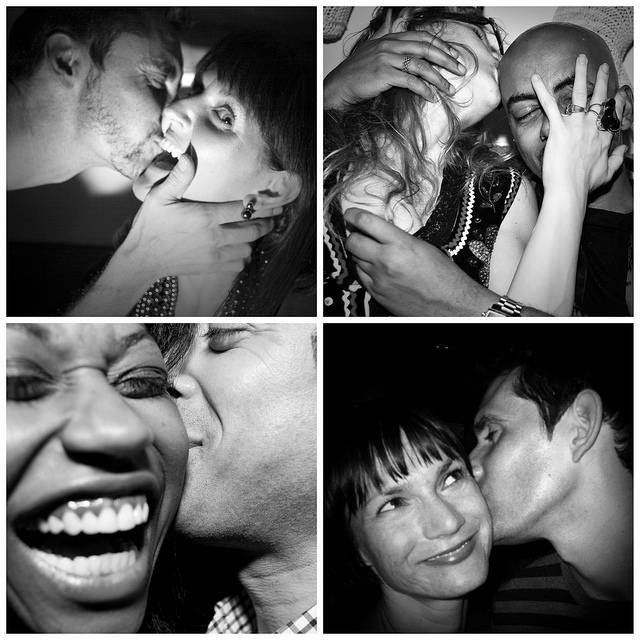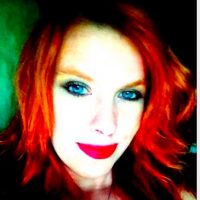Facebook relationships are like real life relationships—they need mindful moderation.
If we want to be happy, we have to create an environment where happiness thrives.
As an apprentice with elephant journal, I took part in their social media immersion. Posting to Facebook has become a part of my every day, and I have grown to enjoy engaging with and entertaining readers from all over the world—but that wasn’t always the case.
In the past, like many others, I had become disillusioned with social media. I felt bombarded by news stories, break-ups, drama—and then dramatic posts about not liking drama. I blamed social media for spreading unhappiness. I began to visit Facebook less often and tried to become more present in my “real life.” There were things that I missed, though. I was sad not to know what was happening with my friends. I regretted not seeing their kids’ pictures. I missed being able to stay up to date with long distance family. And who wouldn’t miss the funny videos?
I soon realized that Facebook wasn’t separate from my real life—it had become a part of it.
My apprenticeship meant I had to be on social media often, and I realized I must make some changes. With a few gentle edits to my friends list, I have been able to create healthy boundaries that keep me safe and sane, and they’ve even bled over into my real-life relationships.
With strong boundaries, I am better able to connect with the people in person and online. I have managed to stop overwhelm and upset by respecting myself and my boundaries, which allow me to meet people with compassion, empathy, and tolerance.
Facebook has effective built-in controls that allow us to manage our experience. While real life doesn’t have buttons we can click to define our relationships, we can still create boundaries, and these insights can help.
Tier One Boundaries:
Please move to the right-hand corner of the offending post and click. A little box pops up with the controls we need to change our social media experience. Here, we can make some editing decisions for our newsfeed. In real life, this is like considering interactions with individual people. We can decide whether these relationships are more positive or negative. Do we feel happy and enlivened by this person, or tired and drained after time spent with them? This is the best question I have found to figure out if the relationship is worthy of your time and attention.
Once we know the answer, there are a few ways to move forward:
If we choose “Hide” on Facebook, we will no longer see the offending post.
This post could be some political nonsense. It could be the time of the month where they like to air their dirty laundry for all the world to see. The post is a bit offensive, but it’s not worth ending the entire friendship over. When we “hide” the post, friendship stays intact, and future posts will still be in our feed. “Hide” in real life means letting some distance happen. We have grown apart from this person and need a bit more space. By allowing ourselves that distance, we release stress and make more time for more fulfilling parts of our lives.
“Unfollow” means we no longer wish to hear or see this person at all.
We have irreconcilable differences. This relationship may have become hostile, or we just need to isolate ourselves from it for a while. We do not fear this person, but no longer identify as their friend. It’s someone like our best friend’s on-again-off-again boyfriend who acts like a jerk, but we want to seem somewhat friendly. When we unfollow, we will only see posts that get a lot of comments.
“Hide All” means we will no longer see any posts by this person or page.
We’ll remain distant, silent friends. This relationship has grown difficult or unfulfilling. This is our best friend from middle school who never grew up, or that guy from high school we almost forgot—did he always talk about his cats that much? No need to cut them out completely; they can see our posts, but we are not interested in theirs.
These boundaries offer just the amount of space we need for peace and harmony. More troublesome conflicts need more severe controls.
Tier Two Boundaries (for repeat offenders):
Please click on the person’s name. This will take us straight to their homepage (lair). Once you have arrived, you will see their profile picture. To the far right, there is a “Friends” button. Click this to find the “Unfriend” option. Once we have made this choice, we have completely severed the friendship. In the wise words of Gotye, now they’re “just somebody that you used to know.”
This is for anyone who is rude, obnoxious, vulgar, or trolling us. There is no shame in ridding ourselves of such childishness. It takes the sting out of our social media and sucks all the fun out of the bully’s abuse.
For the toxic, rotten or plain abusive, there is a permanent edit. The blacklisted get the “Block” control.
This life-altering button is located at the top of the page on the right side. It is the little arrow pointing straight down (I like to think of this as the “go to hell” arrow to help me remember). This is the path to the page of final judgment, and casts our former “friend” straight into the firey pits.
This last resort is only used in the direst circumstance, after all other measures have failed. Once pushed to this extreme this person no longer exists in our world (social media or otherwise). This is the virtual version of a real-life restraining order. This person is scary, dangerous, or sketchy in some way. Much like Houdini, we can make them disappear (no CSI necessary). Facebook stalking is now a no-go, for both parties. This scoundrel’s comment may be lurking just under our own, and neither of us will ever know it.
Now for those boundary-less folks. The on-and-off anxiety-sufferers of social media.
I used to have a hard time re-friending people on Facebook. That was before I understood this analogy. I got upset when the same person kept popping up in my friend requests. I had no idea we had gone through this period of being “un-friends.” I was a bit insulted at first when I realized they had snuck out, unbeknownst to me. Don’t take it personally—it’s usually not just you. These friends cope for as long as they can, and then they go into social media hiding from everyone without bias. Hopefully, they will read this article and sort things out. (Feel free to send it to them.)
With boundaries in place, I now go to Facebook without hesitation. I love to read uplifting articles, connect with friends, and watch hilarious animal videos. I updated my interests and built an existence that I love online and in my real life. Lack of healthy boundaries creates much of the stress we deal with in our relationships, and it is such an easy fix.
I hope this analogy empowers others to begin practicing boundaries in their lives.
Author: Traci Burnam
Image: See-ming Lee/Flickr
Editor: Emily Bartran









Read 0 comments and reply